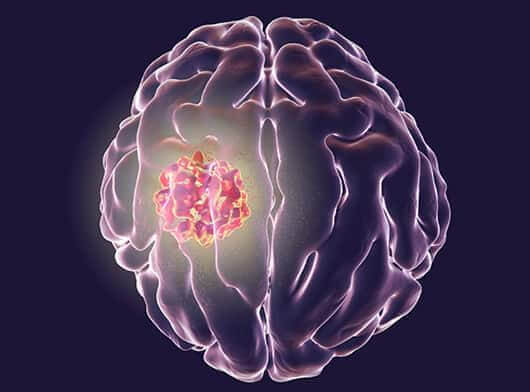- Surgery
- Radiation
- Medical Oncology
- The surgical removal of a brain tumor is the most beneficial option for patients. The surgeon tries to remove the tumor as much as possible without injuring parts of the brain.
- Craniotomy - Conventionally, neurosurgeons open the skull by this procedure to remove the tumor.
- Stereotactic surgical biopsy - It is sometimes performed to help in the diagnosis of the tumor. A small sample of tissue is obtained and sent for histopathological evaluation.
- Surgical navigation systems - These help the surgeon to a precise opening for the excision of the tumor. It also guides intraoperatively for complete tumor removal.
- Awake Craniotomy is an essential technique for patients with tumors which that are found near the area of the brain that controls critical functions such as speech, language or movement. This procedure involves operating on a patient while awake and ensuring these abilities are preserved.
-
Procedures to relieve increased Intracranial pressure
Cerebrospinal fluid (CSF) is a fluid found within the brain and spine which circulates in the system all the time. If there is a block in circulation, the ventricles (the sacs containing CSF) enlarge, increasing the pressure within the skull leading to a condition called Hydrocephalus. Hydrocephalus can be treated by Ventriculoperitoneal Shunting and Endoscopic Third Ventriculostomy. -
Ventriculoperitoneal Shunting
The neurosurgeon uses a shunt to divert the CSF, which is causing the pressure to build up in the skull. The fluid is drained through the shunt into the peritoneal cavity (the cavity housing the abdominal organs), which helps reduce the pressure. -
Endoscopic Third Ventriculostom
The neurosurgeon uses this procedure to divert the brain fluid around the obstruction without the need for a shunt.
-
Radiation therapy
uses high-energy X-rays to kill cancer cells, and abnormal brain cells which help in controlling malignant or benign tumors. - High precision techniques like Intensity Modulated Radiotherapy (IMRT), Image guided Radiotherapy (IGRT), and Volumetric Modulated Arc therapy (VMAT/RapidArc) are useful in targeting the tumor accurately and avoiding normal tissue injury.
- Hippocampal Sparing Whole Brain Radiotherapy - This special technique will protect the areas of the brain which is involved in memory processing (Hippocampus) to reduce the chances of memory impairment
- Stereotactic Radiosurgery (SRS) - is a special radiation technique that delivers precisely-targeted high-dose radiation compared to traditional radiation therapy. This helps preserve healthy brain tissue.
- TomoTherapy -TomoTherapy is the combination of intensity-modulated radiation delivered with the precision and accuracy of computed tomography scanning technology.
- Proton Beam Therapy - Proton Beam Therapy is ideally suited to treat brain tumors and is the global benchmark of excellence in treating pediatric brain tumors.
-
Chemotherapy uses cytotoxic drugs to destroy fast-growing cells, such as cancer cells. Chemotherapy is given along with radiation to boost its effect and also after radiation as adjuvant therapy. Based on the type of brain tumor, these can be given as oral tablets or IV chemotherapy. The adjuvant therapy and the duration are also based on the histopathology of the tumor.
In the case of recurrent disease, the available option includes a combination of targeted therapy along with chemotherapy.



.png)
